Related Research Articles
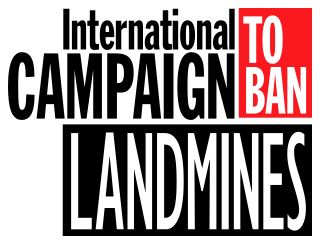
The International Campaign to Ban Landmines (ICBL) is a coalition of non-governmental organizations whose stated objective is a world free of anti-personnel mines and cluster munitions, where mine and cluster munitions survivors see their rights respected and can lead fulfilling lives.

The HALO Trust is a humanitarian non-government organisation which primarily works to clear landmines and other explosive devices left behind by conflicts. With over 10,000 staff worldwide, HALO has operations in 28 countries. Its largest operation is in Afghanistan, where the organization continues to operate under the Taliban regime that took power in August 2021.

Demining or mine clearance is the process of removing land mines from an area. In military operations, the object is to rapidly clear a path through a minefield, and this is often done with devices such as mine plows and blast waves. By contrast, the goal of humanitarian demining is to remove all of the landmines to a given depth and make the land safe for human use. Specially trained dogs are also used to narrow down the search and verify that an area is cleared. Mechanical devices such as flails and excavators are sometimes used to clear mines.
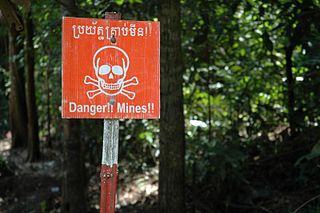
Cambodia is a country located in Southeast Asia that has a major problem with landmines, especially in rural areas. This is the legacy of three decades of war which has taken a severe toll on the Cambodians; it has some 40,000 + amputees, which is one of the highest rates in the world. The Cambodian Mine Action Centre (CMAC) estimates that there may be as many as four to six million mines and other pieces of unexploded ordnance in Cambodia. Some estimates, however, run as high as ten million mines.
FSD is a Swiss non-governmental organisation specialising in mine action. Since its creation in 1997, FSD has carried out operations in some 30 countries on four continents. Its programmes include the following four components: humanitarian demining, explosive ordnance risk education, victim assistance, and stockpile destruction and management. In 26 years, more than 1.4 million items of explosive ordnance have been neutralised by FSD.
A mine clearance organization, or demining organization, is an organization involved in the removal of landmines and unexploded ordnance (UXO) for military, humanitarian, or commercial reasons. Demining includes mine clearance, as well as surveying, mapping and marking of hazardous areas.
The Geneva International Centre for Humanitarian Demining is an international organisation working in mine action and explosive ordnance risk reduction, with a focus on landmines, cluster munitions and ammunition stockpiles. Based in the Maison de la paix in Geneva, it is legally a non-profit foundation in Switzerland.

The region of Nagorno-Karabakh and areas around it are considered to be some of the most heavily mined regions of the former Soviet Union. Mines were laid from early 1990s by both Azerbaijani and Armenian forces during and after the First Nagorno-Karabakh War. The worst-affected areas are along the fortified former contact line between Azerbaijani and Armenian forces, in particular in the districts of Aghdam, Fuzuli and Jabrayil. According to military experts from both Azerbaijan and Armenia, the ground in those areas is covered with "carpets of land mines." The region has the highest per capita rate in the world of accidents due to unexploded ordnance.
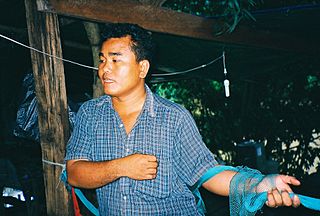
Aki Ra is a former Khmer Rouge conscripted child soldier who works as a deminer and museum curator in Siem Reap, Cambodia. He has devoted his life to removing landmines in Cambodia and to caring for young landmine victims. Aki Ra states that since 1992 he has personally removed and destroyed as many as 50,000 landmines, and is the founder of the Cambodian Landmine Museum.

The Maison de la paix is a building owned by the Graduate Institute of International and Development Studies in Geneva, Switzerland. The building was designed by Eric Ott of Neuchâtel's IPAS firm. It serves as the headquarters for the Graduate Institute and houses the three Geneva Centres, which comprise the Geneva Centre for Security Policy (GCSP), the Geneva International Centre for Humanitarian Demining (GICHD), and the Geneva Centre for the Democratic Control of Armed Forces (DCAF). It is the main element of the Campus de la paix.
Mine action is a combination of humanitarian aid and development studies that aims to remove landmines and reduce the social, economic and environmental impact of them and the explosive remnants of war (ERW).
The Swiss Campaign to Ban Landmines is a member of the International Campaign to Ban Landmines (ICBL). It is an umbrella organisation composed of about 50 Swiss NGOs gathered around the common objective of banning antipersonnel landmines and similar indiscriminate weapons. At the national level, the Swiss Campaign to Ban Landmines successfully advocated in favor of a national ban of antipersonnel landmines and of Switzerland’s signature and ratification of the Ottawa Treaty in 1995-1997. Within the ICBL, the Swiss Campaign was a member of the Non State Actors Working Group, which it co-chaired until the end of 2004.

The Mines Advisory Group (MAG) is a non-governmental organization that assists people affected by landmines, unexploded ordnance, and small arms and light weapons.

The United Nations Mine Action Service (UNMAS) is a service located within the United Nations Department of Peacekeeping Operations that specializes in coordinating and implementing activities to limit the threat posed by mines, explosive remnants of war and improvised explosive devices.

Danish Demining Group (DDG) is the Human Security Unit under the Danish Refugee Council (DRC), specialised in clearing landmines and unexploded ordnance and reducing armed violence.

The Center for International Stabilization and Recovery (CISR), formerly the Mine Action Information Center (MAIC), is a public policy center at James Madison University that manages information, conducts training, holds conferences and workshops, and performs research relevant to humanitarian mine clearance, victim assistance, mine risk reduction and other explosive remnants of war (ERW).
MineWolf Systems provides machines and services for the mechanical clearance of landmines and other explosive devices. Its customers are mine clearance agencies in the commercial, humanitarian and military demining field. British company Pearson Engineering Ltd, a leading provider of Combat Engineer equipment, announced acquisition of the IP and Assets of MineWolf Systems in 2016.
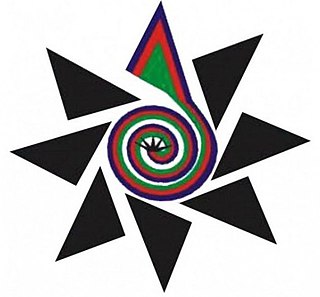
Azerbaijan National Agency for Mine Action (ANAMA) is a mine action agency and executive body under State Commission for Reconstruction and Rehabilitation of War-Affected Areas of the Republic of Azerbaijan. The agency is accountable for implementing all necessary procedures corresponding to Azerbaijan Mine Action Program in order to decontaminate mines within the territory of Azerbaijan. Donors of the agency are government of Azerbaijan ($2,400,000) and UNDP ($160,000).

ITF Enhancing Human Security is a humanitarian, non-profit organization founded by the Republic of Slovenia., which specializes in land mine clearance and post-conflict reconstruction. It was established on 12 March 1998 with the purpose of helping Bosnia and Herzegovina in its post-conflict rehabilitation, specifically with mine clearance and assistance to mine victims.
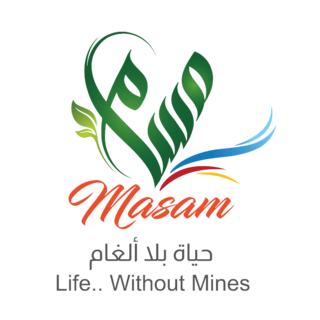
Project Masam is a multilateral humanitarian land mine clearance project in Yemen launched by the Kingdom of Saudi Arabia in June 2018.
References
- ↑ "Resources".
- ↑ A guide to Mine Action. GICHD, 2014. Chapter 4, p.110: http://www.gichd.org/fileadmin/GICHD-resources/rec-documents/Guide-to-mine-action-2014.pdf
- ↑ Livelihoods Analysis of Landmine/ERW Affected Communities. Third Survey: Badakhshan Province, Afghanistan. Qudous Ziaee, Samim Hashimi and Shapur Qayyumi, 2013: p. 16
- 1 2 Gender Mainstreaming in Mine Action – a Critical Background Analysis. Hilde Wallacher, Assistance to Mine-Affected Communities (AMAC), 2007, p.2: http://file.prio.no/Publication_files/Prio/Gender_mainstreaming_in_mine_action_nov_07_background_report.pdf
- 1 2 UNMAS and Gender Mainstreaming in Mine Action. Aaron J. Buckley and Akiko Ikeda, The Journal of ERW and Mine Action. Issue 13.3, Winter 2009: http://www.jmu.edu/cisr/journal/13.3/notes/buckley_ikeda/buckley.shtml
- ↑ Beijing Platform for Action, 1995. Strategic objective E.2. Reduce excessive military expenditures and control the availability of armaments. Actions to be taken: 143.e.: http://www.un.org/womenwatch/daw/beijing/platform/armed.htm
- ↑ A Guide to Mine Action. GICHD, 2013: p.113 to 115: http://www.gichd.org/fileadmin/GICHD-resources/rec-documents/Guide-to-mine-action-2014.pdf
- ↑ "Resolution 1325 (2000)". United Nations. Retrieved 21 March 2017.
- ↑ United Nations High Commissioner for Refugees. "Refworld - Gender Guidelines for Mine Action Programmes". Refworld. Retrieved 14 April 2015.
- 1 2 3 4 5 6 "Archived copy" (PDF). Archived from the original (PDF) on 2016-03-04. Retrieved 2015-03-23.
{{cite web}}: CS1 maint: archived copy as title (link) - ↑ Convention on Cluster Munitions. Article 5, Victim assistance, p.9: http://www.clusterconvention.org/files/2011/01/Convention-ENG.pdf Archived 2015-02-13 at the Wayback Machine
- 1 2 "Archived copy" (PDF). Archived from the original (PDF) on 2015-09-23. Retrieved 2015-03-23.
{{cite web}}: CS1 maint: archived copy as title (link) - ↑ The Strategy of the United Nation on Mine Action 2013-2018, 2013, p.10: http://www.mineaction.org/sites/default/files/publications/mine_action_strategy_mar15.pdf Archived 2015-02-06 at the Wayback Machine
- 1 2 http://www.maputoreviewconference.org/fileadmin/APMBC-RC3/3RC-Maputo-action-plan-adopted-27Jun2014.pdf [ bare URL PDF ]
- ↑ "International Mine Action Standards: About IMAS". mineactionstandards.org. Retrieved 14 April 2015.
- ↑ "International Mine Action Standards: About NMAS". mineactionstandards.org. Retrieved 7 April 2015.
- ↑ "Archived copy" (PDF). Archived from the original (PDF) on 2015-04-02. Retrieved 2015-03-23.
{{cite web}}: CS1 maint: archived copy as title (link) - ↑ "Archived copy" (PDF). Archived from the original (PDF) on 2015-04-02. Retrieved 2015-03-23.
{{cite web}}: CS1 maint: archived copy as title (link) - ↑ "Archived copy" (PDF). Archived from the original (PDF) on 2015-04-02. Retrieved 2015-03-23.
{{cite web}}: CS1 maint: archived copy as title (link) - ↑ "Archived copy" (PDF). Archived from the original (PDF) on 2015-04-02. Retrieved 2015-03-23.
{{cite web}}: CS1 maint: archived copy as title (link) - ↑ http://www.mineactionstandards.org/fileadmin/MAS/documents/imas-international-standards/english/series-08/IMAS-08.10-Ed.1-Am2.pd%5B%5D
- 1 2 "Gender & Mine Action Programme – Gmap.ch".
- ↑ Review of the DDG Humanitarian Mine Action Support to the National Strategy through Clearance and Enhanced Quality Project in Afghanistan (October 2010 – September 2013). Final Report. SIDA, p.8: http://www.oecd.org/derec/sweden/SIDAReviewDDG%20HumanitarianMineActionSupportNationalStrategyAfghanistan.pdf
- ↑ http://www.gmap.ch/fileadmin/GMAP_Articles_and_Papers/2014_Outcomes_of_Gender_Mainstreaming_in_the_Mine_Action_Programmes_of_Afghanistan_and_South_Sudan.pdf [ dead link ]
- ↑ "Archived copy" (PDF). Archived from the original (PDF) on 2016-03-04. Retrieved 2015-03-23.
{{cite web}}: CS1 maint: archived copy as title (link) - ↑ Gender Issue: An Example from Lao PDR. Jo Durham, MAG Lao. The Journal of ERW and Mine Action, Issue 12.2, Winter 2008/2009: http://www.jmu.edu/cisr/journal/12.2/focus/durham/durham.shtml
- ↑ Gender Guidelines for Mine Action Programmes. UN, 2010, p. 13: http://www.mineaction.org/sites/default/files/publications/MA-Guidelines-WEB.pdf Archived 2016-03-04 at the Wayback Machine
- ↑ Gender Mainstreaming in Mine Action in Conflict Situations. Hilde Wallacher, International Peace Research Institute, Kjell Erling Kjellman, International Peace Research Institute. PRIO, Policy Brief 10/2008: http://www.isn.ethz.ch/Digital-Library/Publications/Detail/?ots591=0c54e3b3-1e9c-be1e-2c24-a6a8c7060233&lng=en&id=117659
- ↑ DPKO Practices in Gender Mainstreaming. Kateland Shane. The Journal of ERW and Mine Action. Issue 12.2, Winter 2008-2009: http://www.jmu.edu/cisr/journal/12.2/profiles/shane/shane.shtml
- ↑ "Gender & Victim Assistance". 8 July 2011. Archived from the original on 27 June 2015. Retrieved 29 June 2015.
- ↑ "404 - CMC".
{{cite web}}: Cite uses generic title (help) - ↑ "Archived copy" (PDF). Archived from the original (PDF) on 2015-09-14. Retrieved 2015-08-10.
{{cite web}}: CS1 maint: archived copy as title (link) - ↑ http://www.europarl.europa.eu/meetdocs/2014_2019/documents/femm/dv/gbv_toolkit_book_01_20_2015_/gbv_toolkit_book_01_20_2015_en.pdf [ bare URL PDF ]
- ↑ ""Convention d'Ottawa: Des principes d'un traité aux actions sur le terrain" | Club suisse de la presse". Archived from the original on 2015-09-23. Retrieved 2015-08-10.
- ↑ "UN Mine Action Gateway - Gender & Mine Action".
- ↑ "Gender and Land Release: The Responsibility of the Mine-action Community, by Marie Nilsson, Virginie Rozès and Juliane Garcia (13.2)".
- ↑ "Gender & Mine Action Programme – Gmap.ch".
- ↑ "Filling a niche: Gender and Mine Action Programme". 4 June 2014.
- ↑ "Clearing Land Mines Becomes Women's Work in Mozambique and Beyond". 13 December 2014. Archived from the original on December 13, 2014.
- ↑ "Geneva International Centre for Humanitarian Demining: Gender and diversity".
- ↑ "MdP Gender & Diversity Hub - Facebook". Facebook .
- ↑ Åsa Massleberg. "Redefining Success: Whose Reality Counts?". The Journal of ERW & Mine Action. 14 (2).
- ↑ Arianna Calza Bini; Nyske Janssen; Abigail Jones. "Effects of Mixed Teams on Land Release". The Journal of ERW & Mine Action. 18 (1).
- ↑ "Gender & Mine Action Programme – Gmap.ch".